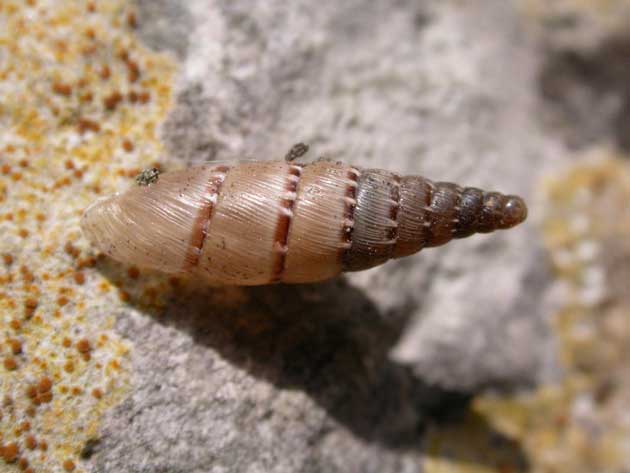Discovered - The snails that hid from history

They have survived two world wars, a sex scandal and the feet of thousands of visitors to the Berkshire country house of Cliveden, to conduct what must be the slowest invasion of Britain by an alien species.
For the past 110 years, a colony of snails has managed to crawl unnoticed from an imported stone balustrade brought from Italy in the 1890s, to claim a piece of British territory up to the terrace of the house just 27m (88ft) away.
A National Trust volunteer spotted the snails while cleaning some statues in the garden. It was the first time that anyone had realised that the Mediterranean mollusc had managed to establish a bridgehead into Britain – at the dizzy pace of about 25cm a year.
Cliveden became renowned for a summer party in 1961 where a young call-girl called Christine Keeler first met Conservative war minister John Profumo. They had an affair at the same time that Keeler was seeing a Soviet spy, a scandal that led to Profumo's resignation and the fall of the Conservative government of Harold MacMillan.
The Italian snail, Papillifera papillaris, has no English name but the National Trust, which owns the stately home, is calling it the "Cliveden snail". It has a spindle-shaped shell and is only about 1cm long.
"For this small colony of snails to remain undiscovered for more than 100 years, despite thousands of people visiting Cliveden every year, is remarkable," said Matthew Oates, Conservation Adviser at the National Trust. He added: "It really demonstrates how important our built structures can be for wildlife."
Experts believe that the snails must have hitched a ride on a marble balustrade brought to Cliveden in 1896 from the gardens of the grand Villa Borghese in Rome. Several hundred snails survived the frosty British winters by crawling deep into the crevices of the carved balustrade.
"Although the Cliveden snail hitched a ride to the UK, it doesn't appear to be a threat to our native wildlife as it has taken 100 years to get from the balustrade to the house. We're now working to ensure that it has a secure future at Cliveden," Mr Oates said.
"Discoveries like this are rare and it's a chance for us to celebrate the amazing nature of wildlife."
The gardens of the National Trust have nurtured other exotic species, such as an oil beetle in Devon that was thought to have been extinct for more than 60 years and a new species of plume moth at Wicken Fen in Cambridgeshire.
Since 2003, four species of wildlife new to Britain have been discovered in the Trust's gardens – a mistletoe bug, a paper wasp, a small fly called Homoneura interstincta and now, of course, a snail from Italy.
Foreign bodies
* American red signal crayfish were introduced into England in the 1970s. The local, less aggressive white crayfish is smaller and less fertile, making it less able to compete.
* Grey squirrels from North America were introduced in the early 19th century, and have pushed out the native red from much of England.
* Ruddy ducks appeared in Britain in the 1940s, and interbreed with the white-headed duck in Spain.
Join our commenting forum
Join thought-provoking conversations, follow other Independent readers and see their replies
Comments
Bookmark popover
Removed from bookmarks